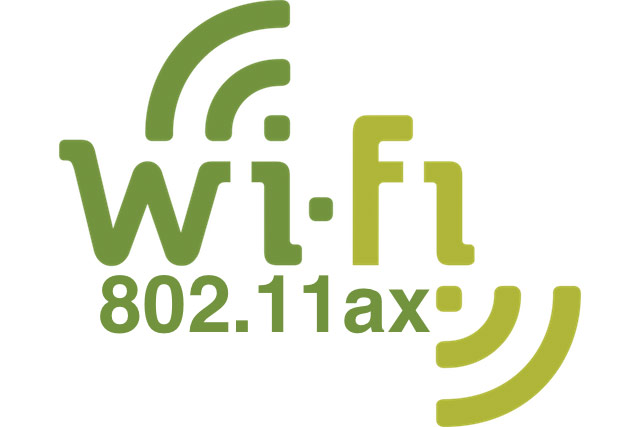Next Generation of Wifi

In the past few years, we have seen some significant advancements in wireless technology. Starting with 802.11ac Wave 1, we saw about double the theoretical max data rate (from 600Mbps to 1.3Gbps) from the previous standard 802.11N. Thanks to the addition of 80MHz channels and 3 spatial streams. The next generation, 802.11ac Wave 2, increased those numbers even further by adding 160MHz channel support and Multi-User MIMO.
The advancements in these AC technologies were much needed in the industry, but I wouldn’t necessarily call them “game changers”. The increase in  channel frequency was achieved by bonding more channels, meaning that the extremely dense real-world deployments could not effectively take advantage of the technology due to channel overlap. Even MU-MIMO was an advancement of a technology that had been around for over a decade – single user MIMO.
channel frequency was achieved by bonding more channels, meaning that the extremely dense real-world deployments could not effectively take advantage of the technology due to channel overlap. Even MU-MIMO was an advancement of a technology that had been around for over a decade – single user MIMO.
The next generation of WiFi promises to be that “game changer” technology the wireless world has been waiting on. This blog will focus on the total redesign that went into 802.11ax, and the benefits that this technology will soon be bringing to mobile networks hopefully by early 2019.
Benefits
802.11ax is designed specifically for high-density public environments, such as libraries, stadiums, conference centers, airports, etc. But it also will be beneficial in Internet of Things (IoT) deployments, in heavy-usage homes, in apartment buildings and in offices that use high bandwidth applications like videoconferencing. Perhaps the most exciting feature of 802.11ax is that it was designed for cellular data offloading, allowing cellular networks to offload data to a compatible wireless network in cases where poor cellular connection is present. Note – I’m a little biased on this feature since my house only gets “2 bars” of cell reception on a good day.
The ReDesign

802.11ax touts a theoretical maximum bandwidth of 14Gbps, delivering single streams at speeds up to 3.5Gbps. Thanks to the new multiplexing technology that was adapted from the world of LTE (cellular), a single AP can deliver 4 of these 3.5Gbps streams to equal that theoretical max bandwidth number of 14Gbps. Thanks to a higher order of QAM modulation, which allows more data to be transmitted per packet, 802.11ax delivers nearly 40% more real throughput when compared to 802.11ac technology. The total number of available channels will also increase in 802.11ax. There has been talks of the FCC opening up more of the radio spectrum, however this is not how 802.11ax achieves a higher number of channels. Instead, 802.11ax creates broader channels and splits them into narrower sub-channels. This will drastically increase spectrum utilization and decrease interference on the wireless network.
802.11ax also made some significant improvements to the Multi User MIMO technology. With AC Wave 2 AP’s arecapable of transmitting 4 concurrent down-streams of data. 802.11ax allows for 8 simultaneous streams, and makes use of a technology called explicit beamforming to better aim the streams at the receiving client radios. This will provide better reception, range, and throughput while minimizing interference on the network. Even more importantly, 802.11ax piggybacks on MU-MIMO with an LTE cellular base station technology called Orthogonal Frequency Division Multiple Access (OFDMA). This allows each MU-MIMO stream to be split in four additional streams, boosting the effective bandwidth per user by four times. From a user perspective, the network will seem much less congested than with 802.11ac.
The final big improvement in 802.11ax comes from the device side, rather than the network. As wireless technology improves client battery life typically also improves due to data being transmitted faster and further, meaning the client device does not need to work as hard. 802.11ax has built on this trend by introducing a feature called “time scheduling”. This enables Aps to tell clients when to go to sleep and provides a schedule of when to “wake” to receive the next transmission. These are very short periods of time, but make a huge difference in the overall battery life of a device as the wireless card is no longer “always on”.
In conclusion, 802.11ax aims to increase network efficiency, range, speed, and reception while minimizing the issues that haunt us today in dense environments: inefficient spectrum utilization and interference. Consumer grade 802.11ax routers have already begun shipping, starting with Asus who shipped their router on August 30, 2017. Enterprise access points are expected to begin shipping around mid 2018. As with 802.11ac wave 2 the major bottleneck looks like it will again be client devices. To take full advantage of the technology client devices need to be equipped with AX capable wireless cards, giving them access to the 8 MU-MIMO spatial streams. However, I expect client device adoption to be much swifter with this standard because of the significant battery life improvements (which is a big selling point for phones). Only time will tell, but the good news is that 802.11ax is backwards compatible with both 802.11ac and 802.11n devices.
Categories
Search
Blog Categories
Related Resources
Archives
- July 2024
- June 2024
- May 2024
- April 2024
- March 2024
- January 2024
- October 2023
- September 2023
- August 2023
- July 2023
- June 2023
- May 2023
- April 2023
- March 2023
- February 2023
- January 2023
- October 2022
- July 2022
- June 2022
- May 2022
- April 2022
- March 2022
- February 2022
- January 2022
- December 2021
- November 2021
- October 2021
- September 2021
- August 2021
- July 2021
- June 2021
- May 2021
- April 2021
- March 2021
- February 2021
- January 2021
- December 2020
- November 2020
- October 2020
- September 2020
- August 2020
- July 2020
- June 2020
- May 2020
- April 2020
- March 2020
- February 2020
- January 2020
- December 2019
- November 2019
- October 2019
- September 2019
- August 2019
- July 2019
- June 2019
- May 2019
- April 2019
- March 2019
- February 2019
- January 2019
- December 2018
- November 2018
- October 2018
- September 2018
- August 2018
- July 2018
- June 2018
- May 2018
- April 2018
- March 2018
- February 2018
- January 2018
- December 2017
- November 2017
- October 2017
- September 2017
- August 2017
- July 2017
- June 2017
- May 2017
- April 2017
- March 2017
- February 2017
- January 2017
- December 2016
- November 2016
- October 2016
- September 2016
- August 2016
- July 2016
- June 2016
- May 2016
- March 2016
- February 2016
- January 2016
- December 2015
- October 2015
- September 2015
- August 2015
- July 2015
- June 2015
- May 2015
- April 2015
- March 2015
- February 2015
- January 2014
- February 2013




